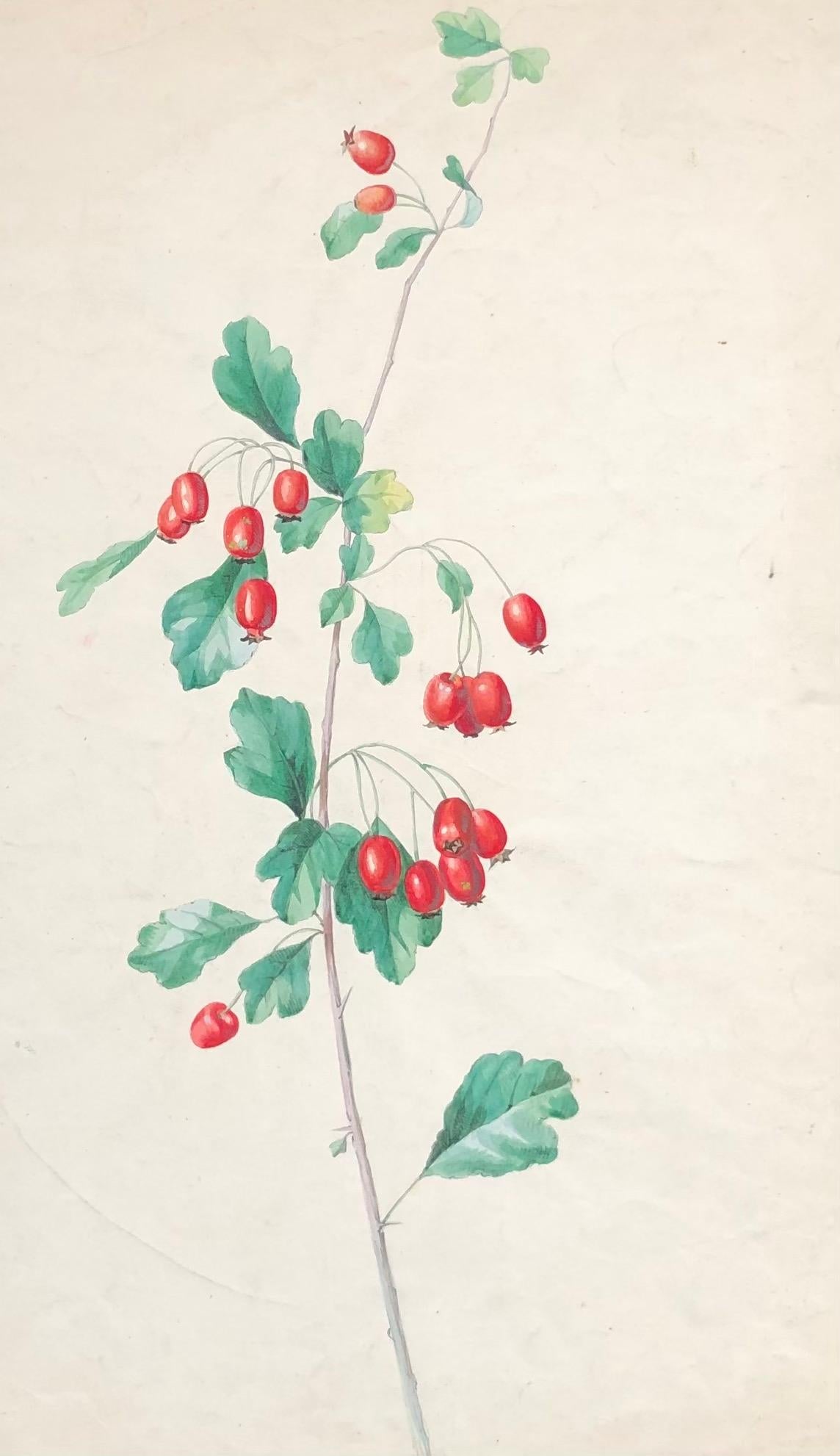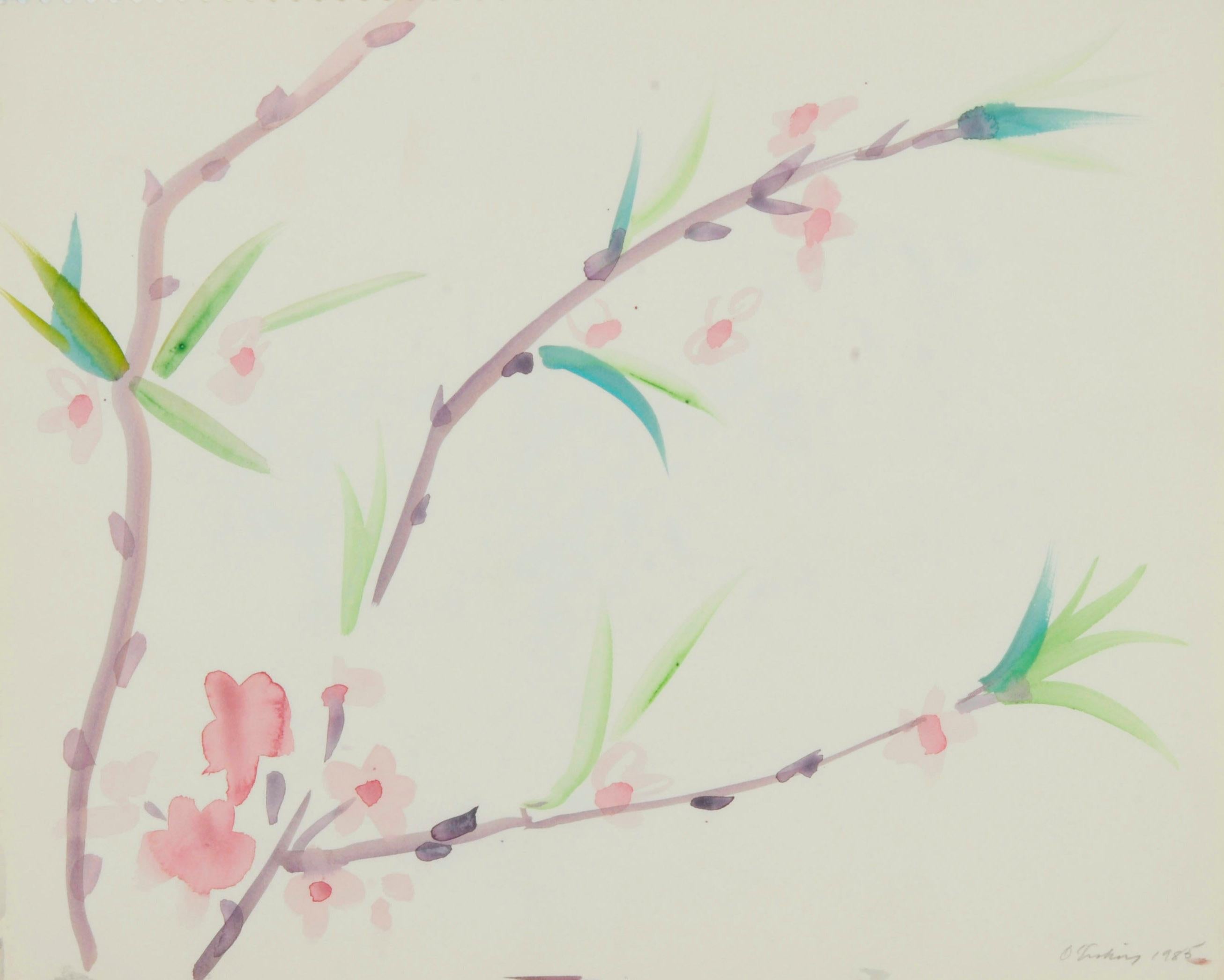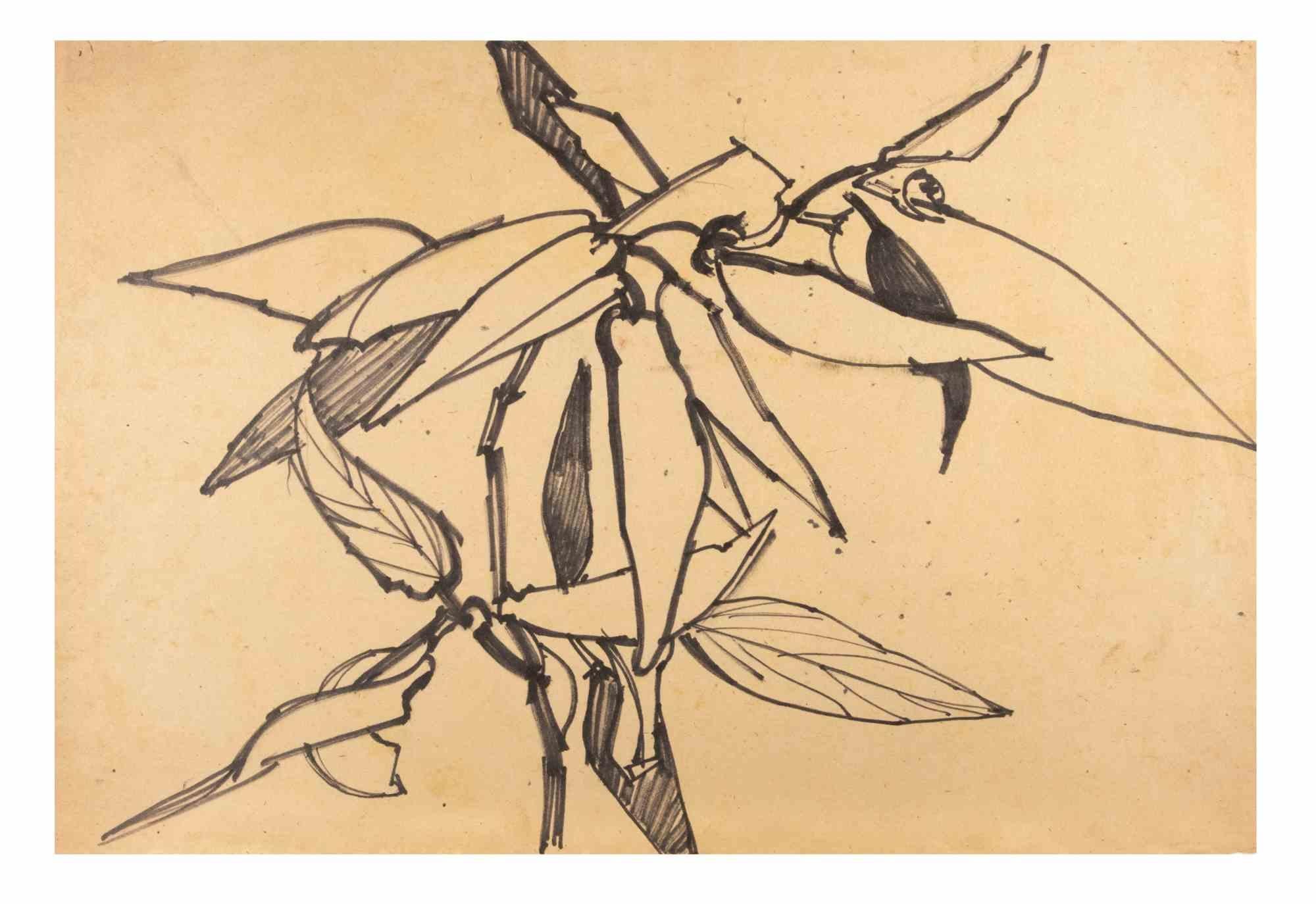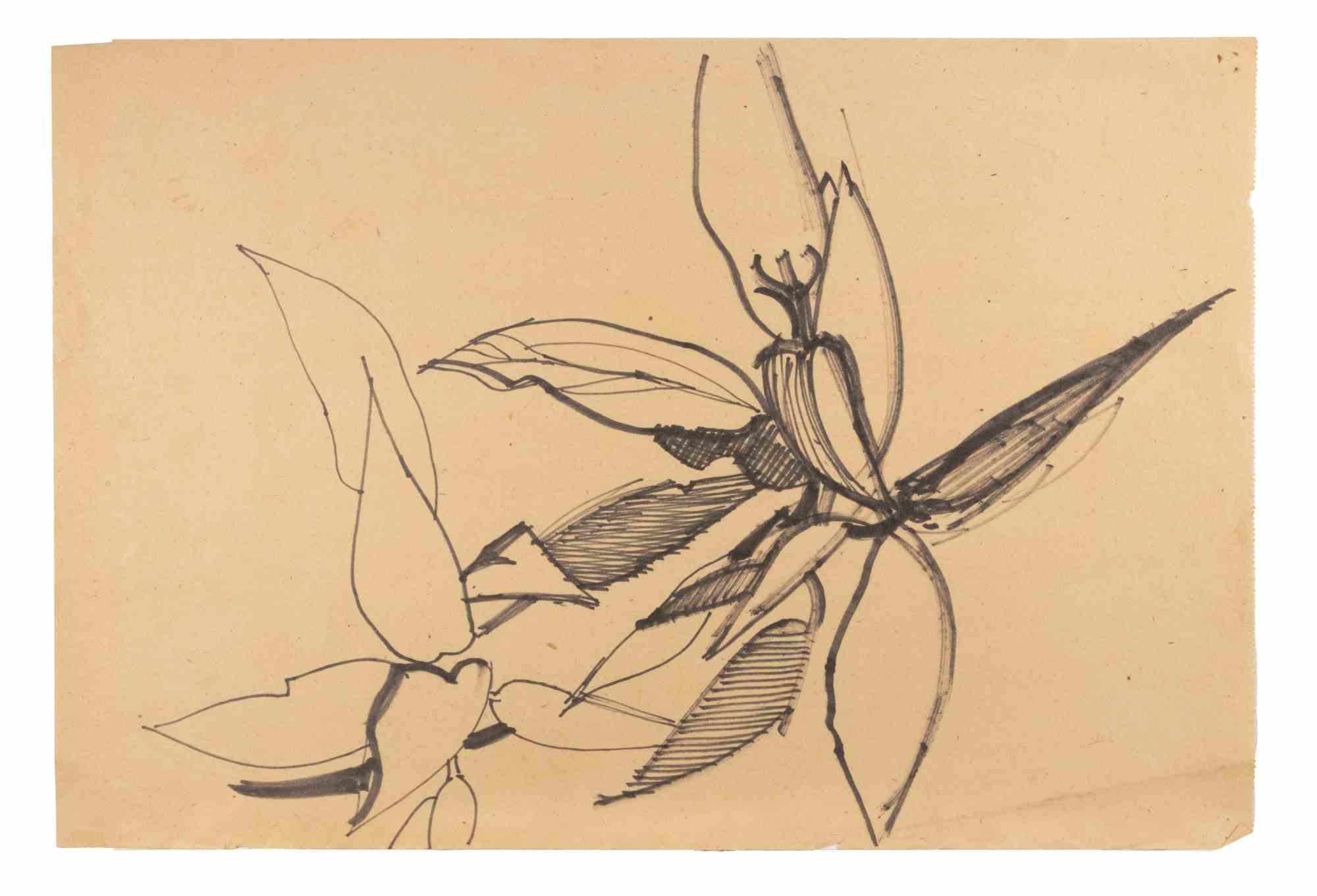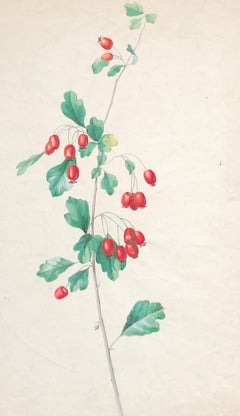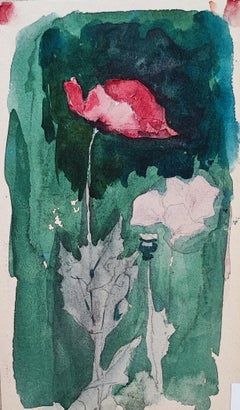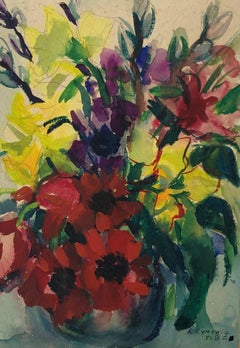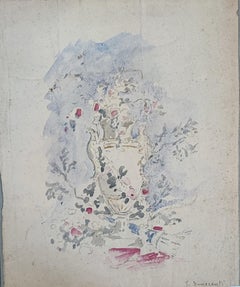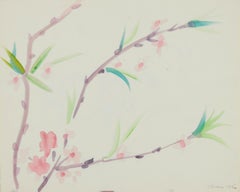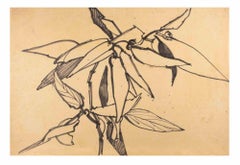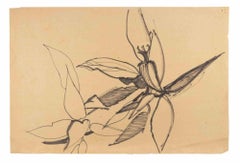Want more images or videos?
Request additional images or videos from the seller
1 of 10
Juliette CalameFlowering branch1902
1902
$1,219.82
£902.03
€1,020
CA$1,688.04
A$1,878.65
CHF 978.07
MX$22,686.76
NOK 12,265.93
SEK 11,585.94
DKK 7,769.01
About the Item
Work on paper
This work illustrates a vibrant branch of flowers, showcasing shades of bright red and soft green. The artist has precisely captured the delicacy of the undulating petals, contrasting beautifully with the slender, lightly veined leaves. The flowers, probably vine trumpets, almost seem to pop out of the canvas, thanks to a subtle play of light and shadow. The white background emphasizes the purity and vitality of the composition, allowing the colors to express themselves fully. Every detail is carefully crafted, underlining the artist's concern for realism and technical mastery. This piece evokes a natural harmony, inviting the viewer to contemplate the simple yet striking beauty of botany.
- Creator:Juliette Calame (1864-1933, Swiss)
- Creation Year:1902
- Dimensions:Height: 13.98 in (35.5 cm)Width: 20.99 in (53.3 cm)Depth: 0.12 in (3 mm)
- Medium:
- Movement & Style:
- Period:
- Condition:
- Gallery Location:Genève, CH
- Reference Number:1stDibs: LU2018215558842
About the Seller
5.0
Vetted Professional Seller
Every seller passes strict standards for authenticity and reliability
1stDibs seller since 2022
147 sales on 1stDibs
Typical response time: 16 hours
- ShippingRetrieving quote...Shipping from: Genève, Switzerland
- Return Policy
Authenticity Guarantee
In the unlikely event there’s an issue with an item’s authenticity, contact us within 1 year for a full refund. DetailsMoney-Back Guarantee
If your item is not as described, is damaged in transit, or does not arrive, contact us within 7 days for a full refund. Details24-Hour Cancellation
You have a 24-hour grace period in which to reconsider your purchase, with no questions asked.Vetted Professional Sellers
Our world-class sellers must adhere to strict standards for service and quality, maintaining the integrity of our listings.Price-Match Guarantee
If you find that a seller listed the same item for a lower price elsewhere, we’ll match it.Trusted Global Delivery
Our best-in-class carrier network provides specialized shipping options worldwide, including custom delivery.More From This Seller
View AllBuds
By Juliette Calame
Located in Genève, GE
Work on paper
Category
Early 20th Century Still-life Drawings and Watercolors
Materials
Crayon, Watercolor
$1,183
Flowers
By Guglielmo Innocenti
Located in Genève, GE
Works on paper
Category
20th Century Italian School Still-life Drawings and Watercolors
Materials
Crayon, Watercolor
Bouquet of flowers
Located in Genève, GE
Work on paper
Dimensions of the passepartout:
40.6 x 29.5cm
This captivating watercolor depicts a vibrant bouquet of brightly colored flowers. The work boasts a dynamic composition i...
Category
1980s Expressionist Still-life Drawings and Watercolors
Materials
Watercolor
Floral composition
By Guglielmo Innocenti
Located in Genève, GE
Works on paper
Category
20th Century Italian School Still-life Drawings and Watercolors
Materials
Crayon, Watercolor
Bouquet in vase
Located in Genève, GE
Work on cardboard
Golden wooden frame
72 x 57.5 x 2.5 cm
Category
Mid-20th Century Still-life Drawings and Watercolors
Materials
Watercolor
Flowers
Located in Genève, GE
Work on wood
Salmon wood frame
Dimensions with frame : 56 x 41 x 1.7 cm
This work of art, dominated by swirls of vibrant, bold colors, embodies a feeling...
Category
Late 20th Century Expressionist Still-life Paintings
Materials
Oil
You May Also Like
Plum Branches and Flowers
By Joseph O'Sickey
Located in Fairlawn, OH
Plum Branches and Flowers
watercolor on wove paper, 1985
Signed and dated in pencil lower right corner
From the artist's 1985 sketchbook
Inspired by O'Sickey's love of Japanese and Chinese art and calligraphy.
Provenance: Estate of the artist
Condition: Excellent
Image/Sheet size: 13 5/8 x 17 inches
Joseph B. O’Sickey, Painter
1974 CLEVELAND ARTS PRIZE FOR VISUAL ARTS
The title conferred on him by Plain Dealer art critic Steve Litt in a 1994 article, “the dean of painting in northeast Ohio,” must have pleased Joseph O'Sickey. It was more than 30 years since he had burst onto the local (and national) art scene. O’Sickey was already in his 40s in that spring of 1962 when he had his first one-man show at the Akron Art Museum and was signed by New York’s prestigious Seligmann Galleries, founded in 1888. In the decade and a half that followed, he would have seven one-man shows at Seligmann, which had showed the work of such trailblazing figures as Seurat, Vuilliard, Bonnard, Leger and Picasso, and appear in all of the group shows.
O’Sickey took the Best Painting award in the 1962 May Show at the Cleveland Museum of Art (CMA). He and would capture the same honor in back-to-back May Shows in 1964 and ’65, and again in 1967. The remarkable thing, noted the Plain Dealer’s Helen Borsick, was that he accomplished this sweep in a variety of painterly styles, even using that most hackneyed of subjects, flowers. “The subject doesn’t matter,” he told her, “what the artist brings to it is the important thing.” O’Sickey’s garden and landscape paintings were big and bold, eschewing delicate detail in favor of vitality and impact. The great art collector and CMA benefactor Katherine C. White, standing before one of O’Sickey’s vivid garden paintings, compared the sensation to “being pelted with flowers.”
Though he might represent an entire blossom with one or two smudged brush strokes or a stem with a simple sweep of green, O’Sickey rejected the moniker of Impressionist—or Pointillist or Abstract painter or Expressionist. “My work,” he said, “is a direct response to the subject. I believe in fervor and poetic metaphor. I try to make each color and shape visible and identifiable within the context of surrounding colors and shapes. A yellow must hold its unique quality from any another yellow or surrounding color, and yet read as a lemon or an object, by inference. It does not require shading or modeling—the poetic evocation is part of the whole.”
“The subject,” O’Sickey used to tell his students at Kent State University, where he taught painting from 1964 to 1989, “has to be seen as a whole and the painting has to be structured to be seen as a whole.” He liked to think of it as “a process of controlled rapture.”
When, in the 1960s, fond childhood memories drew him to the zoo, he found himself responding to the caged animals in their lonely dignity (or indignity) with sharp-edged, almost silhouette-like forms that evoked Matisse’s paintings and cut-paper assemblages. One observer was left with the impression that the artist had “looked at these animals, past daylight and into dusk when they lose their details in shadow and become pure shapes, with eyes that are seeing the viewer rather than the other way around. This is a world of shape and essence,” wrote Helen Borsick. “All is simplification.”
O’Sickey attributed his ability to capture his subjects with just a few strokes—in an almost iconographic way—to a rigorous exercise he had imposed upon himself over a period of several months. Limiting his tools to a large No. 6 bristle brush and black ink, he set himself the task of drawing his pet parakeet and the other small objects in its cage (cuttlebone, feeding dish, tinkling bell) hundreds of times. The exercise gave him “invaluable insights into painting. . . . Because of the crudity of the medium, every part of these drawings had to be an invention and every mark had to have its room and clarity.” Then he began adding one color at a time—“still with the same brush and striving for the same clarity”—and headed off to the zoo where “the world opened up to me. I learned how little it took to express the subject.”
Born in Detroit at the close of the First World War, O’Sickey grew up in St. Stanislaus parish near East 65th and Fleet on Cleveland’s southeast side. (The apostrophe was inserted into the family’s proud Polish name by a clerk at Ellis Island.) An early interest in drawing and painting may have been kindled by the presence on the walls of Charles Dickens Elementary School, one of only three grade schools in the district with a special focus on the arts, of masterful watercolors by such Cleveland masters as Paul Travis, Frank N. Wilcox and Bill Coombes.
As a youngster O’Sickey took drawing classes at the Cleveland Museum of Art, and he and his brother spent hours copying famous paintings; while a student at East Tech High School in the mid-’30s, he attended free evening classes in life drawing with Travis and Ralph Stoll at the John Huntington Art and Polytechnic Institute, and Saturday classes at the Cleveland School (later the Cleveland Institute) of Art, where he earned his degree in 1940 under the tutelage of Travis, Stoll and such other legendary figures as Henry Keller, Carl Gaertner, William Eastman, Kenneth Bates...
Category
1980s Contemporary Still-life Drawings and Watercolors
Materials
Watercolor
Flowers - Drawing By Reynold Arnould - 1970
Located in Roma, IT
Flowers is a Color Marker Drawing realized by Reynold Arnould (Le Havre 1919 - Parigi 1980).
Good condition on a yellowed paper.
No signature.
Reynold Arnould was born in Le Havr...
Category
1970s Modern Still-life Drawings and Watercolors
Materials
Paper, Permanent Marker
untitled (flowers)
Located in New York, NY
Focused on wildflowers spotted along rural roads in his native Minnesota, these paintings capture the delicate beauty of these native flowers against deep magenta backgrounds. Rangin...
Category
1990s Landscape Drawings and Watercolors
Materials
Paper, Watercolor
Flowers - Drawing By Reynold Arnould - 1970
Located in Roma, IT
Flowers is a Black Marker Drawing realized by Reynold Arnould (Le Havre 1919 - Parigi 1980).
Good condition on a yellowed paper.
No signature.
Reynold Arnould was born in Le Hav...
Category
1970s Modern Still-life Drawings and Watercolors
Materials
Paper, Permanent Marker
untitled (wildflower)
Located in New York, NY
Focused on wildflowers spotted along rural roads in his native Minnesota, these paintings capture the delicate beauty of these native flowers against deep blue backgrounds. Ranging f...
Category
1990s Landscape Drawings and Watercolors
Materials
Paper, Watercolor
Floral Bouquet
By Ralph Farabee
Located in Austin, TX
Title: "Floral Banquet"
Artist: Ralph Farabee
Medium: Watercolor on paper
Size: 7" x 10"
Framed
Category
21st Century and Contemporary Still-life Drawings and Watercolors
Materials
Watercolor, Archival Paper
More Ways To Browse
Used Natural Trumpet
Modern Etching
Photographs Of Nature
Figurative Contemporary Painters
Raised Paintings
Small Paintings In Frames
Still Life Photography
Painting Of A Salon
Abstract Art Orange
Painting By Women Artists
Family Abstract
London Oil Painting
Silhouette Art
Antique Figurative Paintings
Multiple Graphic Prints
Art On Wood Panel
Blue Black Painting
Used Tvs
